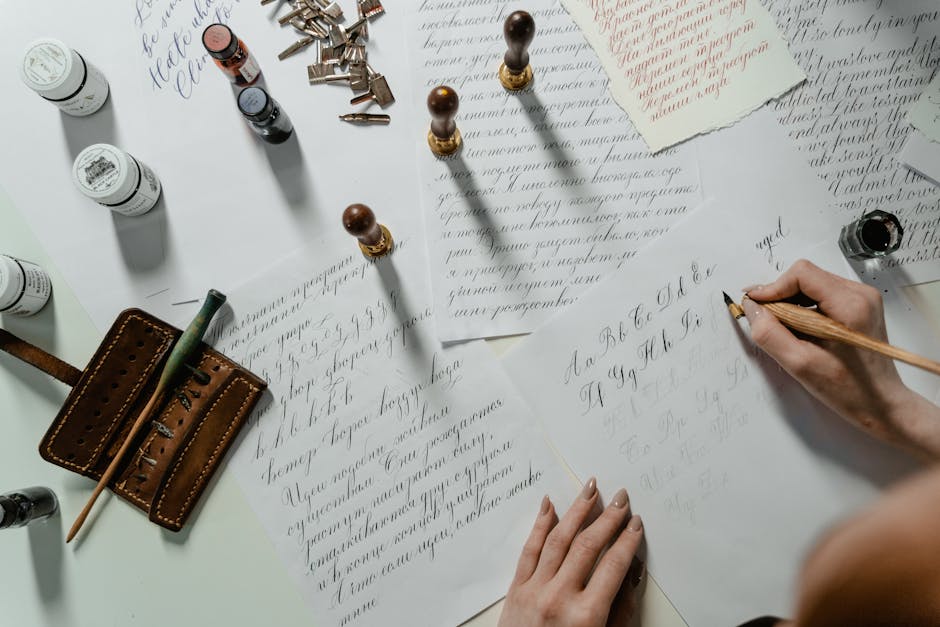The Arabic Alphabet in Calligraphy: Techniques and Tools
Welcome to the fascinating world of Arabic calligraphy! 🌟 Whether you’re a seasoned artist or a curious beginner, exploring the art of Arabic script can be an enriching experience. In this blog post, we’ll journey through the techniques and tools that bring the beautiful curves and lines of the Arabic alphabet to life. Let’s dive in!
Table of Contents
1. Introduction to Arabic Calligraphy
2. Essential Tools for Arabic Calligraphy
3. Techniques for Mastering the Script
4. Practicing Calligraphy: Tips and Tricks
5. Conclusion
6. FAQs
Introduction to Arabic Calligraphy
Arabic calligraphy is more than just writing; it’s an art form that has been cherished for centuries. With origins dating back to the 7th century, this style of writing is known for its elegant script and intricate designs. Calligraphy has been used to decorate everything from mosques to manuscripts, playing a key role in Islamic art and culture.
Essential Tools for Arabic Calligraphy 🖋️
Before you can start creating beautiful calligraphy, you’ll need to gather some essential tools. Here are the basics:
1. Qalam (Reed Pen)
A traditional tool for writing Arabic calligraphy, the qalam is made from a dried reed. You can craft your own by cutting the reed at an angle to create a nib, or purchase one ready-made.
2. Ink
High-quality ink is crucial for achieving smooth, consistent lines. Look for calligraphy ink that’s rich in pigment and flows well on paper. Black is the traditional choice, but feel free to experiment with colors!
3. Paper
The right paper can make all the difference. Opt for paper that’s smooth and thick enough to withstand ink without bleeding. Practice paper is fine for beginners, but as you advance, consider higher-quality options.
Techniques for Mastering the Script ✍️
Learning Arabic calligraphy involves mastering the unique characteristics of each letter. Here are some techniques to help you on your journey:
1. Start with Basic Strokes
Before diving into letters, practice basic strokes. This will help you understand the pressure and movement needed for different styles.
2. Learn the Alphabets
The Arabic alphabet consists of 28 letters. Start by familiarizing yourself with their shapes, then move on to more complex combinations and styles like Naskh or Diwani.
3. Practice Consistently
Consistency is key in calligraphy. Set aside time each day to practice, even if it’s just for a few minutes. Over time, you’ll notice improvement in your technique and style.
Practicing Calligraphy: Tips and Tricks 🎨
As you get more comfortable with the tools and techniques, here are some additional tips to enhance your practice:
1. Use Guidelines
Guidelines will help you keep your letters uniform in size and shape. You can draw these lightly with a pencil or use pre-lined practice sheets.
2. Study the Masters
Look at works by famous calligraphers to understand different styles and find inspiration. YouTube and books can be great resources to see masters in action.
3. Experiment With Styles
Once you have a grasp on the basics, try experimenting with different styles and techniques. Arabic calligraphy offers a variety of scripts, each with its own charm.
Conclusion
Arabic calligraphy is a rewarding art form that combines skill, patience, and creativity. With the right tools and techniques, anyone can learn to create stunning works of art. Whether you’re writing a simple phrase or a detailed piece, the beauty of the Arabic script is sure to captivate both you and your audience.
FAQs
1. What is the best way to start learning Arabic calligraphy?
Begin with basic strokes and practice consistently. Familiarize yourself with the alphabet and slowly progress to more complex scripts.
2. Can I learn Arabic calligraphy without knowing the language?
Yes! Many people learn calligraphy as an art form without understanding the language. However, knowing the language can enhance your appreciation and understanding of the script.
3. What are some common styles of Arabic calligraphy?
Some popular styles include Naskh, Diwani, Thuluth, and Kufic. Each style has unique characteristics and aesthetic qualities.
4. How can I make my calligraphy look more professional?
Use high-quality tools, practice regularly, and study the works of renowned calligraphers to refine your technique and develop your style.
Happy writing and may your calligraphy journey be as beautiful as the art itself! 🌿






